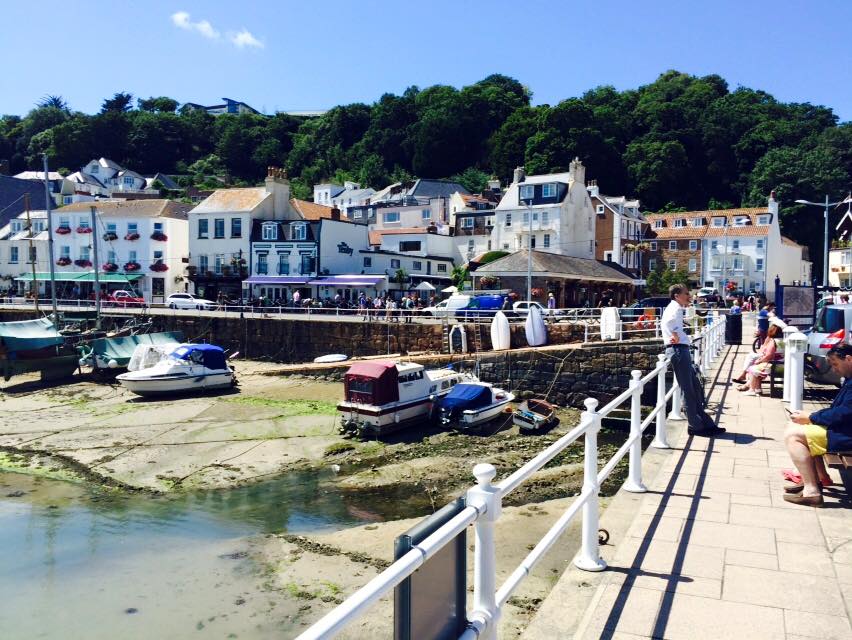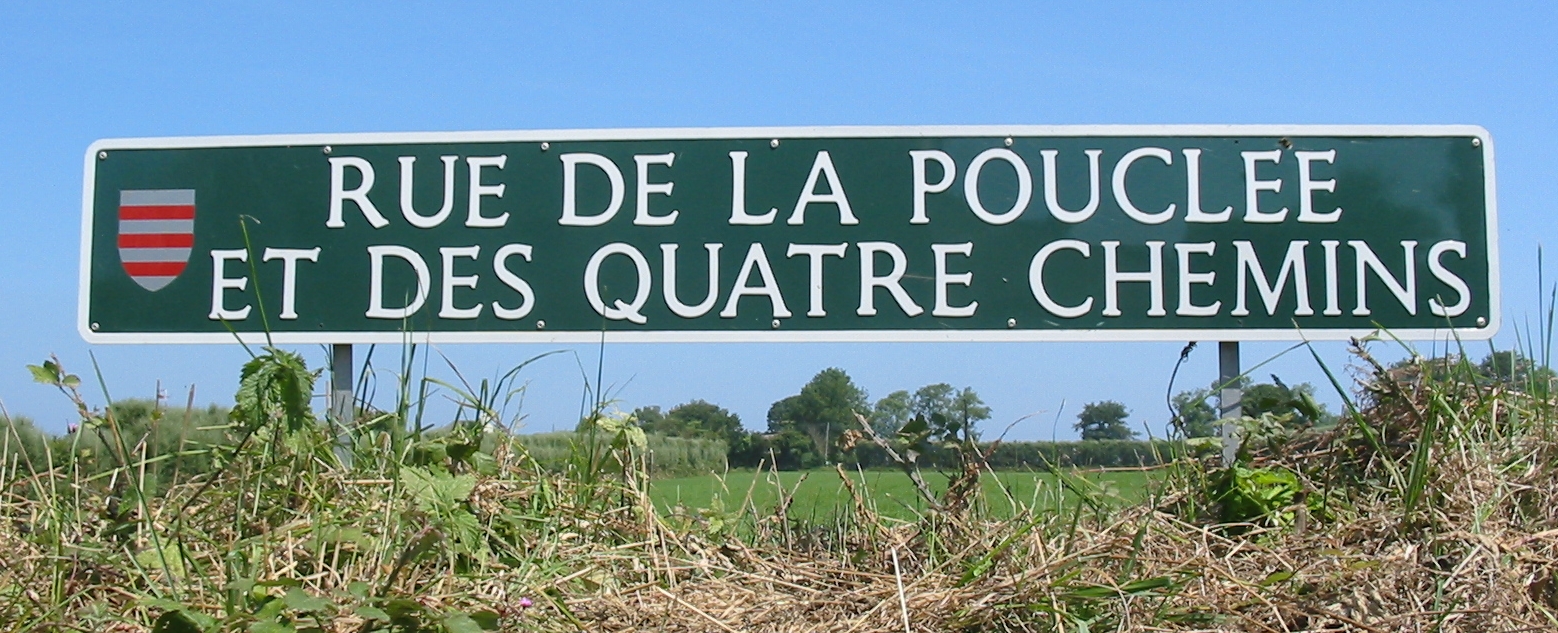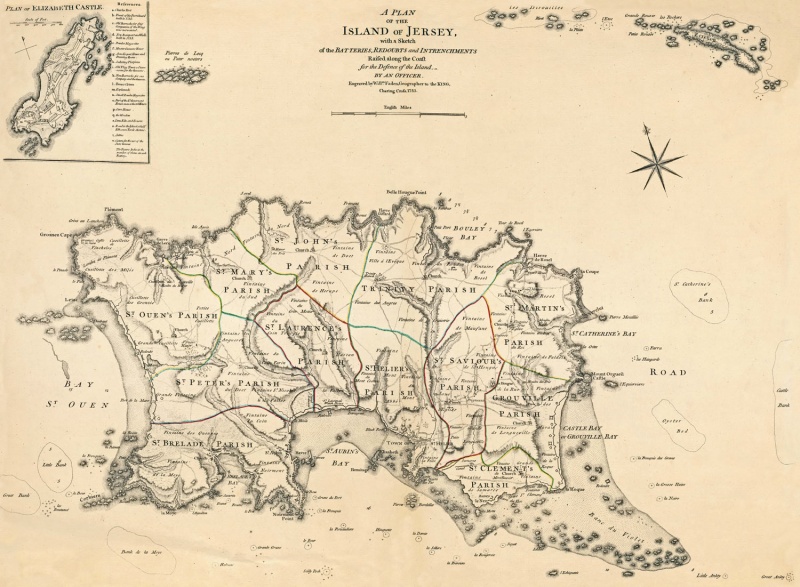|
St Aubin Railway Station
St Aubin railway station, also known as St Aubins was a railway station in Saint Aubin, Jersey, Saint Aubin, a port in Jersey in the Channel Islands. Opened in 1870 by the Jersey Railway, it was in passenger operation until the line closed in 1936. History The Jersey Railway first opened in 1870, running services between St Helier, Saint Helier and Saint Aubin with trains stopping at the three intermediate stations, First Tower, Millbrook and Beaumont. The first trial service ran on 28 September, and on the following day a train carrying 300 invited guests departed from Saint Helier. The line was formally opened to passengers on 17 October with a grand ceremonial opening followed by a banquet at Vingtaine de Noirmont, Noirmont Manor, the residence of the contractor, Mr E. Pickering. On the opening day, 4000 single journeys were made on the line. The station as originally built had two platforms under a trainshed. A hotel opened at the station in 1871. In 1885, a third platfo ... [...More Info...] [...Related Items...] OR: [Wikipedia] [Google] [Baidu] |
Saint Helier
St Helier (; Jèrriais: ; french: Saint-Hélier) is one of the twelve parishes of Jersey, the largest of the Channel Islands in the English Channel. St Helier has a population of 35,822 – over one-third of the total population of Jersey – and is the Capital city, capital of the island. The town of St Helier is the largest settlement and only town of Jersey. The town consists of the built-up areas of St Helier, including First Tower, and parts of the parishes of Saint Saviour, Jersey, St Saviour and Saint Clement, Jersey, St Clement, with further suburbs in surrounding parishes. The greater part of St Helier is rural. The parish covers a surface area of , being 9% of the total land area of the island (this includes Land reclamation, reclaimed land area of or 200 hectare, ha). The growth of the town has been described as "spasmodic", its expansion reflecting waves of migration to the island. The parish arms are two crossed gold axes on a blue background, the blue symbol ... [...More Info...] [...Related Items...] OR: [Wikipedia] [Google] [Baidu] |
Jersey
Jersey ( , ; nrf, Jèrri, label= Jèrriais ), officially the Bailiwick of Jersey (french: Bailliage de Jersey, links=no; Jèrriais: ), is an island country and self-governing Crown Dependency near the coast of north-west France. It is the largest of the Channel Islands and is from the Cotentin Peninsula in Normandy. The Bailiwick consists of the main island of Jersey and some surrounding uninhabited islands and rocks including Les Dirouilles, Les Écréhous, Les Minquiers, and Les Pierres de Lecq. Jersey was part of the Duchy of Normandy, whose dukes became kings of England from 1066. After Normandy was lost by the kings of England in the 13th century, and the ducal title surrendered to France, Jersey remained loyal to the English Crown, though it never became part of the Kingdom of England. Jersey is a self-governing parliamentary democracy under a constitutional monarchy, with its own financial, legal and judicial systems, and the power of self-determination. Th ... [...More Info...] [...Related Items...] OR: [Wikipedia] [Google] [Baidu] |
Channel Islands
The Channel Islands ( nrf, Îles d'la Manche; french: îles Anglo-Normandes or ''îles de la Manche'') are an archipelago in the English Channel, off the French coast of Normandy. They include two Crown Dependencies: the Bailiwick of Jersey, which is the largest of the islands; and the Bailiwick of Guernsey, consisting of Guernsey, Alderney, Sark, Herm and some smaller islands. They are considered the remnants of the Duchy of Normandy and, although they are not part of the United Kingdom, the UK is responsible for the defence and international relations of the islands. The Crown dependencies are not members of the Commonwealth of Nations, nor have they ever been in the European Union. They have a total population of about , and the bailiwicks' capitals, Saint Helier and Saint Peter Port, have populations of 33,500 and 18,207, respectively. "Channel Islands" is a geographical term, not a political unit. The two bailiwicks have been administered separately since the lat ... [...More Info...] [...Related Items...] OR: [Wikipedia] [Google] [Baidu] |
Jersey Railway
The Jersey Railway was opened in 1870 and was originally a standard gauge railway, long, in Jersey in the Channel Islands. Converted to narrow gauge in 1884 and extended giving a length of , the line closed in 1936. It is not to be confused with the Jersey Eastern Railway. History In 1864, the States of Jersey passed a law authorising the construction of the island's first railway. This standard gauge line was constructed, connecting St. Helier to St. Aubin, and the first train ran 25 October 1870. This railway was not a success and the company declared bankruptcy in 1874. The railway continued to operate but passed through a succession of proprietors until 1883. Meanwhile, the owner of a granite quarry near La Moye had petitioned to build a railway linking his quarry to St. Aubin. This law passed in June 1871 and the St Aubin & La Moye Railway commenced construction to the narrow gauge of . This line too, ran into financial problems and although construction trains ... [...More Info...] [...Related Items...] OR: [Wikipedia] [Google] [Baidu] |
Saint Aubin, Jersey
St. Aubin ( Jèrriais: ''Saint Aubîn'') is a town and port in St. Brelade in Jersey, the largest of the Channel Islands. It is located on the western end of St. Aubin's Bay, on the south coast of the island, opening out into the Gulf of Saint-Malo. St. Aubin was originally a fishing village and the historic economic centre of the island. The Jersey Railway historically terminated in the town, at what is now the parish hall. The Railway Walk, a trail following the route of the former Jersey Railway to La Corbière, starts from St Aubin. The town is the civil administrative centre for the parish of St. Brelade, however ecclesiastically, the parish church is located in St. Brelade's Bay. It retains a much more historic character than St. Helier, whose architecture has changed as the centre of Jersey's finance industry. Toponymy Its name refers to Saint Aubin, the 6th Century C.E. bishop of Angers, and may reflect the name of a long-disappeared chapel. The town has been refer ... [...More Info...] [...Related Items...] OR: [Wikipedia] [Google] [Baidu] |
St Helier
St Helier (; Jèrriais: ; french: Saint-Hélier) is one of the twelve parishes of Jersey, the largest of the Channel Islands in the English Channel. St Helier has a population of 35,822 – over one-third of the total population of Jersey – and is the capital of the island. The town of St Helier is the largest settlement and only town of Jersey. The town consists of the built-up areas of St Helier, including First Tower, and parts of the parishes of St Saviour and St Clement, with further suburbs in surrounding parishes. The greater part of St Helier is rural. The parish covers a surface area of , being 9% of the total land area of the island (this includes reclaimed land area of or 200 ha). The growth of the town has been described as "spasmodic", its expansion reflecting waves of migration to the island. The parish arms are two crossed gold axes on a blue background, the blue symbolising the sea, and the axes symbolising the martyrdom of Helier at the hands of Sax ... [...More Info...] [...Related Items...] OR: [Wikipedia] [Google] [Baidu] |
Vingtaine De Noirmont
Vingtaine de Noirmont is one of the four vingtaines of St. Brélade Parish on the Channel Island of Jersey Jersey ( , ; nrf, Jèrri, label= Jèrriais ), officially the Bailiwick of Jersey (french: Bailliage de Jersey, links=no; Jèrriais: ), is an island country and self-governing Crown Dependency near the coast of north-west France. It is the .... Together with Vingtaine du Coin, it forms "St.Brélade No. 1 district" and elects one Deputy. References Noirmont Saint Brélade {{Jersey-geo-stub ... [...More Info...] [...Related Items...] OR: [Wikipedia] [Google] [Baidu] |
States Of Jersey
The States Assembly (french: Assemblée des États; Jèrriais: ) is the parliament of Jersey, formed of the island's 37 deputies and the Connétable of each of the twelve parishes. The origins of the legislature of Jersey lie in the system of self-government according to Norman law guaranteed to the Channel Islands by John, King of England, following the division of Normandy in 1204. The States Assembly has exercised uncontested legislative powers since 1771, when the concurrent law-making power of the Royal Court of Jersey was abolished. The Assembly passes and amends laws and regulations; approves the annual budget and taxation; appoints the chief minister, ministers and members of various committees and panels; debates matters proposed by the Council of Ministers, by individual States Members or by one of the committees or panels. Members are also able to ask questions to find out information and to hold ministers to account. Executive powers are exercised by a chief mini ... [...More Info...] [...Related Items...] OR: [Wikipedia] [Google] [Baidu] |
Transport In Jersey
Transport in Jersey is primarily through the motor vehicle. The island, which is the largest of the Channel Islands has 124,737 registered vehicles (2016). The island is committed to combatting climate change, having declared a climate emergency, and policy is focused on reducing dependence on the car. The island has a cycle network and bus service. The primary modes of transport for leaving the island are by air or sea. Road transport Road transport is the primary form of both private and public transport in Jersey. Highways Vehicles in Jersey drive on the left side of the road. The island has a default speed limit of 40 miles per hour (64 km/h) with slower limits on certain stretches of road, such as 20/30 mph (32/48 km/h) in built up areas and 15 mph (24 km/h) on roads designated as ''green lanes''. The island is home to longest dual carriageway in the Channel Islands, consisting of Victoria Avenue (A2), and the Esplanade/Route de la Liberation ... [...More Info...] [...Related Items...] OR: [Wikipedia] [Google] [Baidu] |
History Of Jersey
Jersey is the largest of the Channel Islands, an island group in the English Channel near France. Although not geographically part of the archipelago of the British Isles, politically and culturally the islands are generally accepted as such. The Channel Islands are the last remnants of the medieval Duchy of Normandy that held sway in both France and England. The islands remained loyal to the English crown after the return of Normandy to France in 1204 and have enjoyed self-government since. Jersey and the rest of the Channel Islands are notable for being the only part of the British Isles to be occupied by Nazi Germany during World War II. The most widely regarded history of Jersey is ''Balleine's History of the Island of Jersey'', written by G. R. Balleine in 1959, and later adapted by the Société Jersiaise, most notably two of its members Marguerite Syvret and Joan Stevens. Name of the island Although Jersey was part of the Roman world, there is a lack of evidence to giv ... [...More Info...] [...Related Items...] OR: [Wikipedia] [Google] [Baidu] |
Railway Stations Opened In 1870
Rail transport (also known as train transport) is a means of transport that transfers passengers and goods on wheeled vehicles running on rails, which are incorporated in tracks. In contrast to road transport, where the vehicles run on a prepared flat surface, rail vehicles (rolling stock) are directionally guided by the tracks on which they run. Tracks usually consist of steel rails, installed on sleepers (ties) set in ballast, on which the rolling stock, usually fitted with metal wheels, moves. Other variations are also possible, such as "slab track", in which the rails are fastened to a concrete foundation resting on a prepared subsurface. Rolling stock in a rail transport system generally encounters lower frictional resistance than rubber-tyred road vehicles, so passenger and freight cars (carriages and wagons) can be coupled into longer trains. The operation is carried out by a railway company, providing transport between train stations or freight customer facili ... [...More Info...] [...Related Items...] OR: [Wikipedia] [Google] [Baidu] |
Railway Stations Closed In 1936
Rail transport (also known as train transport) is a means of transport that transfers passengers and goods on wheeled vehicles running on rails, which are incorporated in Track (rail transport), tracks. In contrast to road transport, where the vehicles run on a prepared flat surface, rail vehicles (rolling stock) are directionally guided by the tracks on which they run. Tracks usually consist of steel rails, installed on Railroad tie, sleepers (ties) set in track ballast, ballast, on which the rolling stock, usually fitted with metal wheels, moves. Other variations are also possible, such as "slab track", in which the rails are fastened to a concrete foundation resting on a prepared subsurface. Rolling stock in a rail transport system generally encounters lower friction, frictional resistance than rubber-tyred road vehicles, so passenger and freight cars (carriages and wagons) can be coupled into longer trains. The rail transport operations, operation is carried out by a ... [...More Info...] [...Related Items...] OR: [Wikipedia] [Google] [Baidu] |




.jpg)
_on_States_Building_in_St_Helier%2C_Jersey.jpg)


